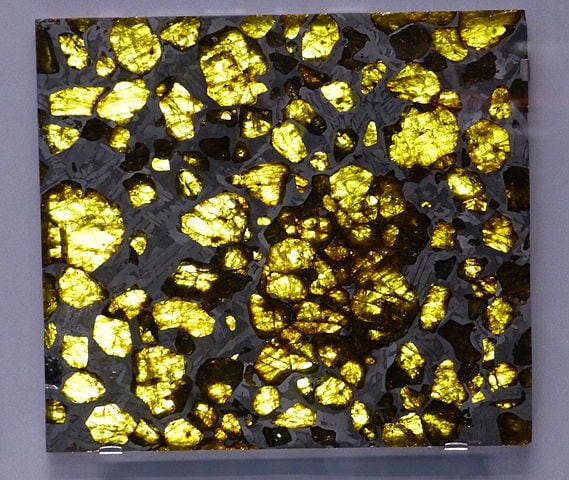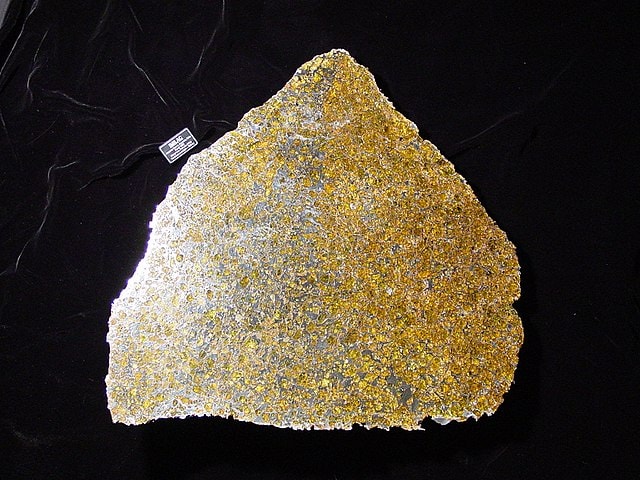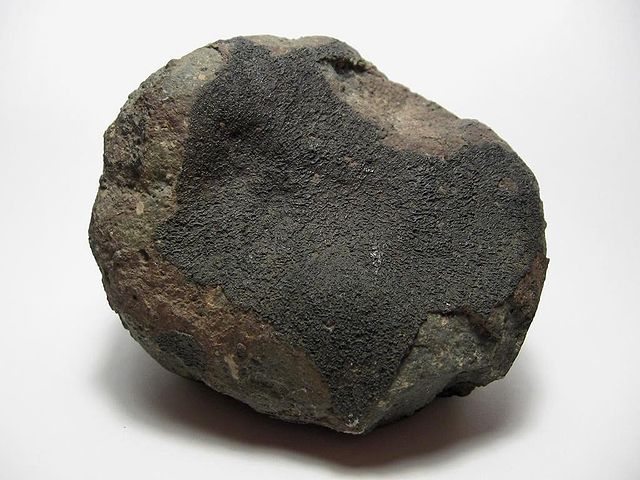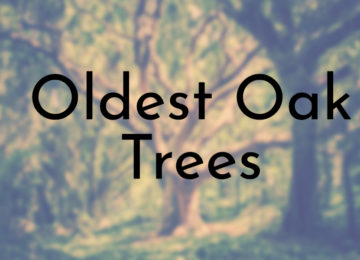Recently, scientists have found evidence suggesting meteorite impacts played a significant role in the formation of Earth’s continents. Meteorites offer important information about the formation of planets and other celestial bodies.
Meteorites contain a critical record of the history of our solar system. Studies of meteorites helped scientists to determine the age of the solar system. Meteorites may originate from various celestial bodies, including comets, asteroids, and planets.
They range in age. Meteorites that originated from the Moon are from 4.5 to 2.9 billion years old. On the other hand, meteorites that originated from asteroids are ~4.5 billion years old.
Here we gather a list of 8 of the oldest meteorites that have ever been found on Earth.
8. Fukang Meteorite
Age: More than 4.5 billion years
Found in the year: 2000
Fall location: found in the Gobi Desert in Xinjiang province, China

Fukang meteorite is one of the oldest and most beautiful meteoroids ever found on Earth. In 2000, a hiker found a large mass in the Gobi Desert near Fukang, China. The weight of the mass was about 2,211 lb. The rock was later identified as a rare Pallasite meteorite.
Pallasite meteorites are a subset of stony-iron meteorites. They have olivine crystals throughout. The inside of the Fukang meteorite revealed a gorgeous honeycomb-like mosaic pattern of olivine crystals.
Fukang meteoroid was first displayed at the Tuscon Gem and Mineral show in February 2005. Later, it was investigated at the Southwest Meteorite Center, Lunar and Planetary Laboratory, the University of Arizona in Tucson, Arizona.
Scientists estimate the meteoroid is over 4.5 billion years old and created during the time when the solar system was formed. The scientists at the University of Arizona described Fukang meteoroid as “the most spectacular example of natural cosmic splendor.”
A 68 lb chunk of this meteoroid is kept as a specimen at the University of Arizona. In April 2008, the main mass of the meteoroid was offered for auction by Bonhams.
Did You Know?
Pallasite meteoroids are exceedingly rare because only a very few of them make it through Earth’s atmosphere. It is estimated that less than 1% of all meteorites found on the Earth are of the Pallasite variety.
7. Imilac
Age: More than 4.5 billion years
Found in the year: 1822
Fall location: Atacama Desert of Northern Chile

Imilac is another pallasite meteoroid that was found much before Fukang. The meteoroid is classified as a stony-iron pallasite. Scientists estimate the meteoroid hit our planet sometime in the fourteenth century.
As it came in contact with the Earth’s atmosphere, it exploded into numerous fragments of various sizes. The fall is estimated to be around 2200 lb. The primary strewn field was about 5 miles long.
The smaller fragments lack the olivine grains due to severe weathering. Only the specimens that are over 2.2 lb contain intact olivine grains. In the market, you can find many tiny pieces of Imilac fragments of only a few grams, called metal skeletons. They are usually heavily weathered and lack the olivine grains.
Did You Know?
Olivine is a magnesium iron silicate. It is the primary component of the Earth’s upper mantle.
6. Northwest Africa 7325
Age: 4.562 billion years
Found in the year: 2012
Fall location: Erfoud, Morocco

Northwest Africa 7325 (NWA 7325) is a unique meteorite that is about 4.562 billion years old. The meteorite is classified as an ungrouped achondrite.
35 fragments of the meteorite (combined weight of approx. 12.2 oz) were initially found by an anonymous finder in early 2012. The stones were fresh and dark greenish in color. Stefan Ralew, a dealer, purchased them in April 2012 in a marketplace in Erfoud, Morocco. Later many additional fragments of NWA 7325 were recovered by the scientists.
Its green fusion crust and high-magnesium/low-iron composition make this meteorite unique. After investigating the fragments, Dr. Anthony Irving at the University of Washington suggested this meteorite might be originated from Mercury. However, later studies rejected this claim.
Did You Know?
Achondrite meteorite is a type of stony meteorite that consists of materials similar to terrestrial basalts or plutonic rocks.
5. Muonionalusta Meteorite
Age: 4.5653 ± 0.0001 billion years
Found in the year: 1906
Fall location: Village of Kitkiöjärvi, Sweden

Muoninalusta is another fascinating meteoroid that was first found in 1906 near the village of Kitkiöjärvi, located in the northern part of Sweden. The meteorite was named after a nearby place on the Muonio River.
Muonunalusta meteorite is believed to have hit the Earth around one million years BCE and survived four ice ages. The first fragment of the meteorite was found by two children who were playing on the ground near Kitkiöjärvi.
Later many other fragments were found in the Pajala district of Norrbotten County, located 87 miles north of the Arctic Circle. The meteorite was first studied by Professor A.G Högbom in 1910. Later, in 1948, the meteorite was investigated by Nils Göran David Malmqvist.
Did You Know?
Fragments of Muonunalusta meteorite have been used in many luxury items, including watches, cars, and even numismatic coins.
4. Allende Meteorite
Age: 4.567 billion years
Found in the year: 1969
Fall location: Near the village of Pueblito de Allende, Chihuahua, Mexico

Allende meteorite is known to be the best-studied meteorite in history. The meteorite hit the Earth on February 8, 1969. In the early morning hours, a huge fireball approached Northern Mexico. It lit the sky and ground for hundreds of miles. They broke into thousands of pieces after entering the Earth’s atmosphere.
The first fall was observed near the village of Pueblito de Allende in the state of Chihuahua. A thorough search was conducted to find the fragments, and nearly 3 tonnes of material were recovered over the next 25 years. Pieces of this meteorite are still being discovered.
An extensive study of the meteorite offered much insightful information about the solar system and its formation.
Did You Know?
Allende meteorite contains large amounts of calcium-aluminum-rich inclusions (CAI), which is one of the oldest objects formed in the Solar System.
3. Winchcombe Meteorite
Age: 4.6 billion years
Found in the year: 2021
Fall location: Village of Winchcombe, England

Winchcombe meteorite is one of the oldest meteorites that hit the Earth only recently. The meteorite is classified as a carbonaceous chondrite. It entered the Earth’s atmosphere at 21.54 hours on February 28, 2021. It was observed over Gloucestershire, England.
The event was captured by camera units of the UK Fireball Alliance. Many others captured the images with their personal camera and mobile phones. The next day, a family in Winchcombe found several small dark stones and powder on their driveway.
Soon appeals were made by the general public to collect the fragments quickly so that analysis could be done before degradation.
The largest fragment that was found weighed around 5.4 oz. However, it split during the recovery process.
Did You Know?
Winchcombe meteorite was the first meteorite found in England since 1991. The fragments are now displayed at the London Natural History Museum.
2. Murchison Meteorite
Age: 4.6 billion years
Found in the year: 1969
Fall location: Murchison, Australia

Murchison meteorite is not only one of the oldest meteorites but also contains the oldest solid material found on Earth to date.
The meteorite hit the Earth on September 28, 1969, at around 10.50 hours. A brilliant huge fireball was observed near Murchison, Victoria, in Australia. It was split into three fragments before it disappeared, and a tremor was heard immediately after.
Many fragments were found in the following days. The total mass of collected pieces exceeds 220lb. The meteorite was classified as a carbonaceous chondrite.
After years of research, in January 2020, scientists ascertained silicon carbide particles found in Murchison meteorite are 7 billion years old, which is roughly 2.5 billion years older than the solar system.
Did You Know?
Scientists said that the parent asteroid of Murchison is “an almost-inert piece of rock that formed from the solar nebula and hasn’t changed since then”. Thus, the presolar grains haven’t been transformed into another type of material.
1. Erg Chech 002
Age: More than 4.6 billion years
Found in the year: 2020
Fall location: Erg Chech region of the Sahara Desert in Algeria

Erg Check 002, also known as EC002, is the oldest meteorite ever found on the Earth. The meteoroid was discovered in 2020 by a group of hunters in the Erg Chech region of the Sahara Desert, Algeria.
Scientists believe the meteoroid hit the Earth at least 100 years ago. Data collected by the Lunar and Planetary Institute suggests EC002 is shaded with tan and beige palettes and has a coarse-grained texture.
The stone has “larger green, yellow-green, and less commonly yellow-brown” crystals.
Did You Know?
Researchers at the University of Western Brittany in France who analyzed the rock said they believe this meteoroid is unique and has little similarities with any other meteoroids ever found on the Earth. They suggest that the rock is probably a part of a long-gone protoplanet.











